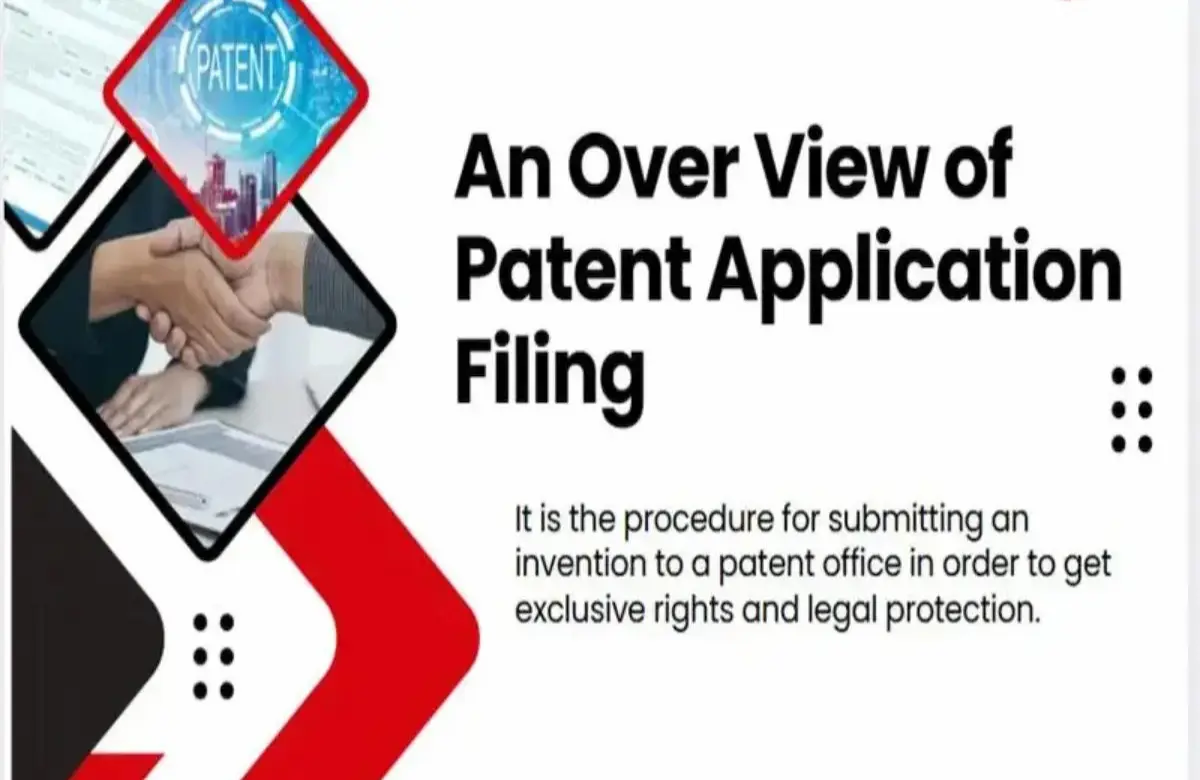
Filing a patent application is one of the biggest steps toward getting a granted patent. Patent Application Process involves explaining your invention, defining claims, preparing technical drawings, and doing searches to ensure the idea is original.
A Proper Patent Application Process Includes
- Description defining the invention and how it works
- Written claims that define what parts of the invention you want to protect
- Patent drawings or patent illustrations to explain the invention visually
- A patentability search to check if something similar already exists
Step 1: Preparation of patent application
Preparing for a patent application filing is important. It means taking certain steps—like doing research, organizing your invention details, and following the correct format—to reduce the chances of your application being rejected later in the process.
Step 2: Patent search
Now time for the patent searches. It helps you understand where your invention stands by showing you existing patents or similar products already on the market. If you find something very similar to your idea, you can modify or refine your invention to make it stand out or be more unique. And if nothing similar is found, you can confidently move forward to the next step in the patent process.
Different types of patent searches:
- Patentability Search
- Novelty Search
- Prior Art Search
- Freedom to Operate (FTO) Search
- Clearance Search
- Infringement Search
- Validity Search
- Invalidity Search
- Landscape Search
- Technology Scouting Search
- Patent Monitoring Search
- Patent Watching Search
Read Also: GoDaddy Hit with $170 Million Verdict in Express Mobile Patent Lawsuit
Step 3: Drafting the Application
This is your time to explain your invention clearly with patent drafting, how it works, and what makes it unique.
- Title of the Invention: A short, clear name that reflects the core idea of your invention.
- Abstract: A summary (around 150 words) describing what your invention does.
- Background of the Invention: Explain the problem your invention aims to solve and highlight any existing solutions or technologies already in use.
- Summary of the Invention: Gives a general overview of how your invention works and what it achieves.
- Detailed Description: A complete explanation of how the invention is made, and used, and possible variations or examples.
- Drawings (if needed): Diagrams or illustrations that visually support and explain the invention.
- Claims: Claims are the specific statements within a patent application process that define the essential elements of an invention and establish the boundaries of legal protection granted to it.
- Abstract of Disclosure (USPTO-specific): A short technical summary that helps with patent searching.
- Inventor Information: Full names and contact details of the inventors.
- Oath or Declaration: A signed statement confirming the inventor is the original creator of the invention.
Step 4: Filing a patent application
Now comes the filing process. Provisional filing and non-provisional filing. A provisional application is useful if your idea is still in development—it gives you an early filing date without requiring full details right away. A non-provisional application is filed when your invention is complete and ready to be formally examined by the patent office.
Step 5: Examination of the application
At this stage, your application enters the examination process, where a patent examiner reviews it to ensure that all legal and technical conditions are met.
Step 6: Publication of an application
After applying, it’s usually published after 18 months. This means it becomes public and anyone can view it, even though it’s not granted yet.
If you want, you can ask for early publication, which can be helpful if you’re trying to attract investors or show others that your invention is already in the works.
For early publication, you have to fill out Form 9.
Read Also: GoDaddy Hit with $170 Million Verdict in Express Mobile Patent Lawsuit
Step 7: Patent Objection and Examination
After the publication in the India Trademark Journal, the application is open for a 4-month period during which any third party can file an objection or opposition. If no opposition is filed within this time, or if the opposition is resolved in your favor, the trademark moves forward toward registration.
Step 8: Grant of a patent
After clearing all the above steps, you get the grant of a patent. Now you officially own it.
Conclusion
The patent application process is important but quite hard, from Patent drafting and filing it properly, every stage plays a key role. This article aims to explain the entire process in simple, easy-to-understand language.
